
Guide
Who knew a pedal bin could be so fancy?
by Pia Seidel

The floor has a major influence on the effect of the room. Cool tiles create a completely different ambience than warm parquet. But which floor suits your requirements?
Over the holidays, I was in my sister's new flat. I knew beforehand that she had laid carpet in the rooms. I was admittedly critical. Old-fashioned and dirty were the attributes that first came to mind. Wrongly so, as I discovered. The carpet I chose really made an impression and looked very cosy.
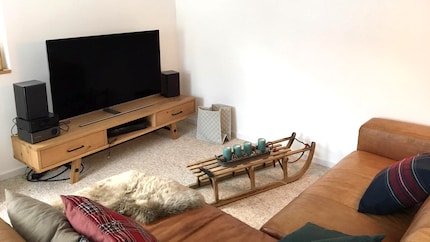
Oops, because normally parquet flooring is the absolute non plus ultra for me. No other floor can compete with it in bedrooms and living rooms. Mainly because it is made of real wood and therefore radiates warmth. However, these properties also come at a price. Laminate flooring, for example, is cheaper to buy and no longer looks as much like plastic as it did in the 90s. Does this make it just as good in my home or do its properties differ too much? And what about the other floor coverings?
?
I'll start with my favourite right away. A natural beauty where no two planks are the same. The wood regulates moisture and temperature, which is why this floor feels warmer than tiles, for example. It is also durable and very easy to maintain when sealed. Moisturising is then completely sufficient. With the oiled version, you should treat it with a care product from time to time. And if damage does occur, parquet can be sanded down completely. Installation is also no longer witchcraft thanks to click systems. I've tried it out myself and the most popular places to use it are living rooms and bedrooms. It should not be used in wet areas as it can swell due to excessive moisture. The high purchase price may seem daunting, but as soon as the service life is taken into account, it becomes clear: parquet is no more expensive than laminate or carpet.
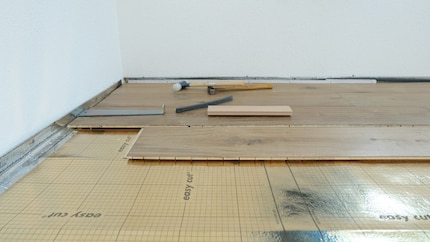
One of the most popular floor coverings, found primarily in living rooms, bedrooms, children's rooms and hallways. At first glance, parquet and high-quality laminate are almost indistinguishable. However, laminate is not a natural product; a thin decorative layer is glued onto a carrier board, which can be printed in a variety of ways. This also results in the first advantage: the variety of designs. Not only wooden floors, but also slate or cork can be imitated. The robust surface makes this flooring extremely easy to clean and can simply be wiped clean. There is also little need to worry about scratches and discolouration caused by excessive exposure to light. On the other hand, it does not conduct heat particularly well and your footsteps can sound like an elephant to your neighbours. Many models do not have particularly good footfall sound insulation. So pay attention to this when buying. The purchase costs are lower than for parquet, but this also applies to the service life. Be aware of what is more important to you.
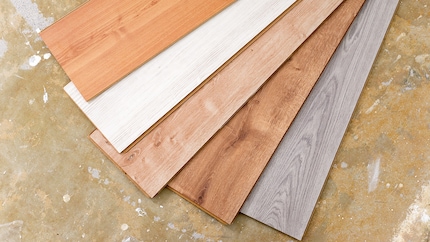
For me, this floor clearly belongs in the kitchen and bathroom, as tiles are insensitive to dirt and moisture, but they are also often found in living rooms, as they offer a variety of designs and can be used as an eye-catcher, as well as being easy to clean and hygienic. You can recognise the robustness of the tiles by the abrasion group, with 1 being the least resistant and 5 the most resistant. You should also pay attention to the slip resistance of the tiles, especially if you spend a lot of time travelling with socks. In contrast to parquet or carpet, tiles tend to feel cold on the feet. It therefore makes sense to combine the tiled floor with underfloor heating, at least in the living room. Laying tiles yourself is also not as easy as with floorboards. If you have no experience with this, you will probably have to call in a professional.
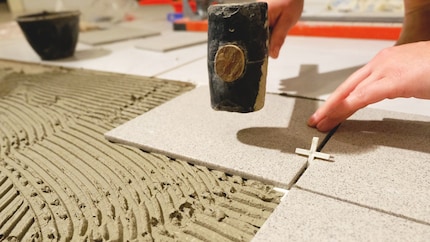
Until now, I have mostly encountered cork in wine bottles or on pinboards, but it also makes a good floor covering. The natural material makes the floor warm to the feet and is therefore very popular with barefoot walkers. But even if you leave your shoes on, nobody will be bothered by it, as cork has a sound-absorbing effect. Its elasticity also makes it pleasant to walk on. One small drawback: the flooring is sensitive to scratches and the choice of patterns is significantly smaller than with plastic flooring.
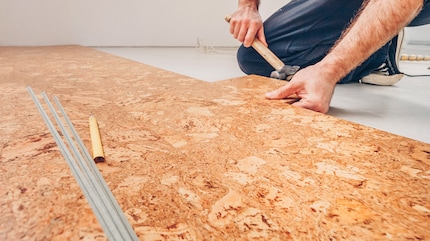
Long a classic in bedrooms. Not surprisingly, the carpet offers a pleasant feeling underfoot. And it's warm too. It also has a sound-absorbing and insulating effect. You also have a huge range of patterns and colours to choose from for this type of floor covering. Even a skilful layman should have no problem laying carpet. However, red wine orgies should remain the exception, as stains are difficult to remove. Or you can opt for carpet tiles. Unlike classic fitted carpets, these can be replaced individually. However, the following applies to all carpets: regular UV radiation will have an effect after a while and discolour the carpet.

PVC has an unflattering reputation. It doesn't feel pleasant underfoot, easily blisters and looks cheap. However, plastic flooring is celebrating a comeback, partly because its quality has improved. It looks particularly good in kitchens as it is low-maintenance and easy to clean. Even the sun can hardly harm the flooring. But uneven floors can. As the installation height of self-adhesive PVC is so low, you can see every imperfection. In this case, it is better to use fully bonded planks. Scratches also occur more quickly than with other floors. However, as with all plastic flooring, you have many different designs to choose from and get away well in terms of price.
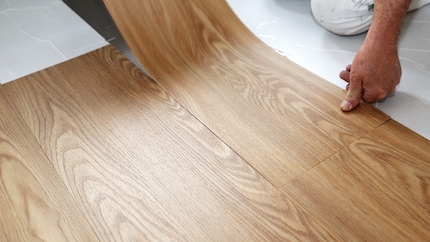
This resilient floor covering is often thought to be artificial, but is actually a natural product made from linseed oil, cork flour and jute fabric. The main advantage of linoleum is certainly its durability and resistance. Pressure marks caused by heavy furniture disappear almost completely over time. The hygienic properties are also impressive, as linoleum is antistatic, slightly fungicidal and bacteriostatic. In plain language, this means that the floor attracts less dust and inhibits the growth of fungi and bacteria. However, strongly alkaline agents (lyes) should be avoided, as linoleum reacts sensitively to them. The floor also has a penetrating odour, especially at the beginning, which some people find unpleasant.
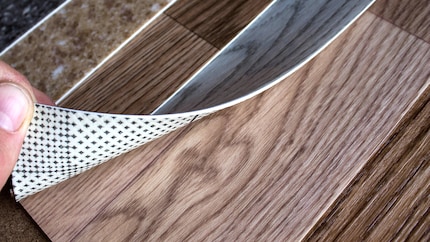
All floor coverings have their pros and cons, after all it depends on the room in which you want to install (or have installed) flooring. Parquet is rather unsuitable in the bathroom and I personally wouldn't put carpet in the kitchen. But your taste also plays a big role. Some people like tiles in the living room, others find them uncomfortable. It's in the eye of the beholder, which gives you room for manoeuvre. And this is what makes flats and houses individual.
Is there a floor that you particularly like but didn't get a place here? Let us know in the comments column.
My life in a nutshell? On a quest to broaden my horizon. I love discovering and learning new skills and I see a chance to experience something new in everything – be it travelling, reading, cooking, movies or DIY.
Practical solutions for everyday problems with technology, household hacks and much more.
Show all